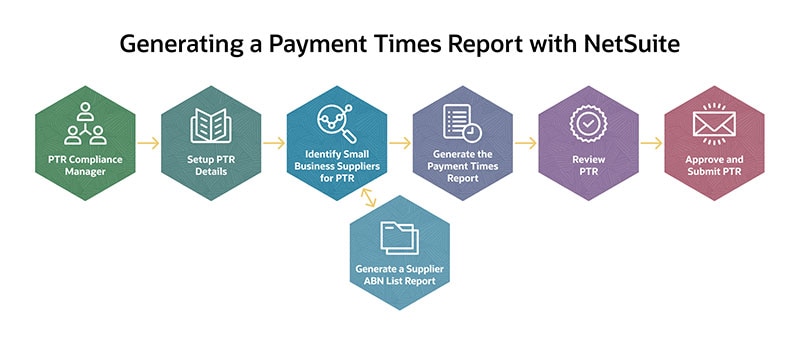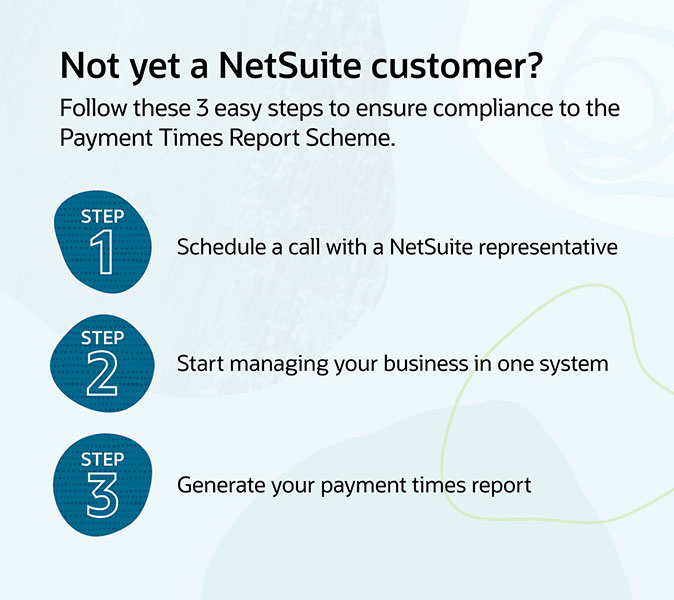Slow payments by large companies to their small business suppliers will not only cause a negative impact to the economy but also cause financial distress to a small business owner.
Of the 2,569,900 businesses actively operating in Australia, more than 98% are considered small businesses according to a recent report by the Australian Bureau of Statistics(opens in new tab). That is why it is critical for small businesses - ‘the lifeblood of the Australian economy’ to receive payments on time to maintain a positive cash flow and manage the uncertainty of the market today.
To encourage better payment practices of large business to small business suppliers, the Federal government of Australia launched the Payment Times Reporting Act of 2020(opens in new tab) on 1 January 2021.
Unfortunately, receiving payments on time is still not the reality for most Australian small businesses today. According to the Australian Small Business and Family Enterprise Ombudsman(opens in new tab), 7 out of 10 small business suppliers are still not getting paid within 30 days, while nearly one-quarter of large businesses will take more than 120 days to pay.
What is Payment Times Reporting?
Payment Times Reporting rules requires large businesses to submit a report on how they are paying their small business suppliers. This helps small businesses see the payment performance of large businesses to judge their risk of delayed cash flow and liquidity.
What is the Payment Times Reporting (PTR) scheme?
Payment Times Reporting Act of 2020(opens in new tab) was launched by the Federal government of Australia to encourage improvement in payment practices of large businesses by ensuring that small businesses are paid on time. Under the scheme, large businesses with an annual revenue of over $100 million must report every 6 months on their payment practices, including the time taken to make payments to small business suppliers and contractors.
Payment Times Reporting (PTR) in Australia
The PTR scheme is regulated by the Australian government and was established under the Payment Times Reporting Act of 2020. The regulator’s role is to ensure reporting compliance and promote a reliable and transparent scheme to enable small businesses to assess large business’s payment performance before agreeing to supply goods or services.
They also assist large businesses covered under the PTR scheme to identify small businesses suppliers through the Payment Times Reporting Small Business Identification Tool(opens in new tab).
The regulator also acts to enforce non-compliance penalties to a reporting business by:
- Publishing details of non-compliance
- Conducting an investigation or compliance audit
- Issuing an infringement notice
- Pursuing a civil penalty case
How Does the Payment Times Report Scheme work?
The payment times report scheme requires large businesses with an annual turnover of over $100 million to submit a report twice annually on how and when they pay their small business suppliers.
An invoice payment must be included in the PTR if it meets the following criteria:
- If the goods or services procured are contractually required to be paid by the reporting entity to a small business.
- The goods or services required to be paid to a small business fall under a trade credit arrangement (also known as supply chain finance arrangement).
The Payment Times Report will include and show the following information(opens in new tab):
- Total amount and number of bills fully paid to small business suppliers
- Total value and number based on the selected reporting period
- Bills fully paid that are categorised based on the following payment brackets:
- Within 20 days of receipt
- Between 21 and 30 days
- Between 31 and 60 days
- Between 61 and 90 days
- Between 91 and 120 days
- More than 120 days
- Total number and value of small business bills paid under a supply chain finance arrangement
- Total value of services procured from small business suppliers
Who is Required to Report Under the Payment Times Report Scheme?
Businesses who are required to report under the scheme are:
- Australian or foreign businesses registered and operating in Australia earning over $100 million in annual revenue
- Businesses earning over $10 million in annual revenue that is part of a corporation earning over $100 million in annual revenue
- Commonwealth companies that earn over $100 million in annual revenue
Organisations who are registered under the Australian Charities and Not-for-profits Commission Act of 2012(opens in new tab) or any business not covered are not required to report have the option to do so.
Benefits of Payment Times Reporting
Thousands of businesses operating in Australia can benefit from the implementation of the PTR scheme. Benefits include:
- Improved business transactions between buyer and seller by promoting transparency, fairness and reliability in business transactions.
- Small business support by giving them access to the payment practices of large businesses.
- Better public profile for large businesses who are shown to consistently pay small businesses quickly.
What are the challenges of the Payment Times Report Scheme for large businesses?
While the Payment Times Report Act of 2020 helps small businesses get paid on time, this presents challenges to large businesses who are required to report. Challenges perceived by large businesses include:
- Generating accurate and timely payment times report every six months
- Identifying which supplier invoices should be included or excluded from the payment times calculations
- Reporting on all entities under the controlling corporation
- Ensuring that invoice payments are accurately captured and reported
- Risk of reputational damage for being seen as a ‘poor payer’
- Avoiding civil penalties imposed by the regulator for being non-compliant
How Can NetSuite Help Australian Businesses Submit Payment Times Reports?
With NetSuite cloud ERP, businesses can easily manage not just compliance and submission of your Payment Times Report (PTR) but also core business functions like finance and accounting, inventory management, orders and procurement.
With NetSuite, businesses can easily generate Payment Time Reports within one unified system, allowing you to:
- Configure and set up your PTR details.
- Identify a vendor as a small business supplier.
- The autonomy to include and exclude certain payments and transactions in the PTR.
- Generate a supplier ABN list report to identify suppliers you need to include in your report.
- Ensure compliance by generating reports bi-annually.
- Gain real-time reporting and visibility to your overall financial and operational performance.


Submit Your Payment
Times Report with
Ease
Payment Times Report FAQs
- Who are the small business suppliers identified under the Payment Times Report scheme?
- How do I register in the reporting portal?
- How do I submit a Payment Times Report?
- Fill out the PTR template found in the portal with payment times information to small business suppliers.
- Complete the PTR Responsible Member Declaration Template found in the portal by a company representative authorised to approve the report.
- Upload files or any other supporting information to the portal.
- What is the reporting period for payment times reporting?
- What is the Payment Times Reporting (SBI) tool?
- Do I need to report if I don’t have any invoices or small business suppliers?
- How do I identify my small business suppliers?
- Are payment times reports publicly available?
- What happens if I don’t submit a Payment Times Report?
- When do I need to submit a report?
- What’s the difference between a head entity and a controlling corporation?
- Can I revise a report after it is submitted?
Small businesses covered under the scheme are businesses in Australia with an ABN and with an annual turnover of below $10 million in the most recent year.
Reporting businesses can identify their small business suppliers through the Small Business Identification (SBI) Tool.
Large businesses required to report will need to create a profile in the Payment Times Reporting Portal(opens in new tab) to register their business.
The Payment Times Reporting Portal(opens in new tab) is where all reporting entities under the Payment Times Report scheme should submit their report. Reporting entities must:
There are two reporting periods under the PTR scheme. The first is the 1st six months of the reporting entity’s income year while the 2nd follows the last six months of the reporting entity’s income year.
All reporting entities will have a reporting window of three months after the end of a reporting period to submit their payment time reports.
The Small Business Identification Tool(opens in new tab) is used to help large businesses required to report under the Payment Times Report Scheme to identify their small business suppliers. It is publicly available and is exclusively available for reporting entities.
Yes, large businesses that are required to report under the PTR scheme are required to report even if your business doesn’t have any payments or invoices to report from small business suppliers
Reporting businesses can identify their small business suppliers through the Small Business Identification (SBI) Tool(opens in new tab).
Yes, all Payment Times Report submitted by large businesses are publicly available on the Payment Times Reports Register(opens in new tab).
Businesses required to report under the scheme but fail to submit the Payment Times Report can face civil penalties. Failure to report has a maximum penalty of 60 penalty units for individuals or 300 penalty units for a body corporate.*
*A penalty unit equals $222 as of 1 July 2020.
Reporting businesses under the Payment Times Report Scheme are required to report twice a year or every six months during their income year.
While the term head entity is not identified in the Payment Terms Reporting Act of 2020, the term used under the scheme refers to a business that is either a controlling corporation of a group, or another type of entity that has a similar role to a controlling corporation.
Reporting businesses under the Payment Times Report Scheme can apply to revise their submitted report through the reporting portal. All applications should have the revision date and description of the changes made to the revised report.









